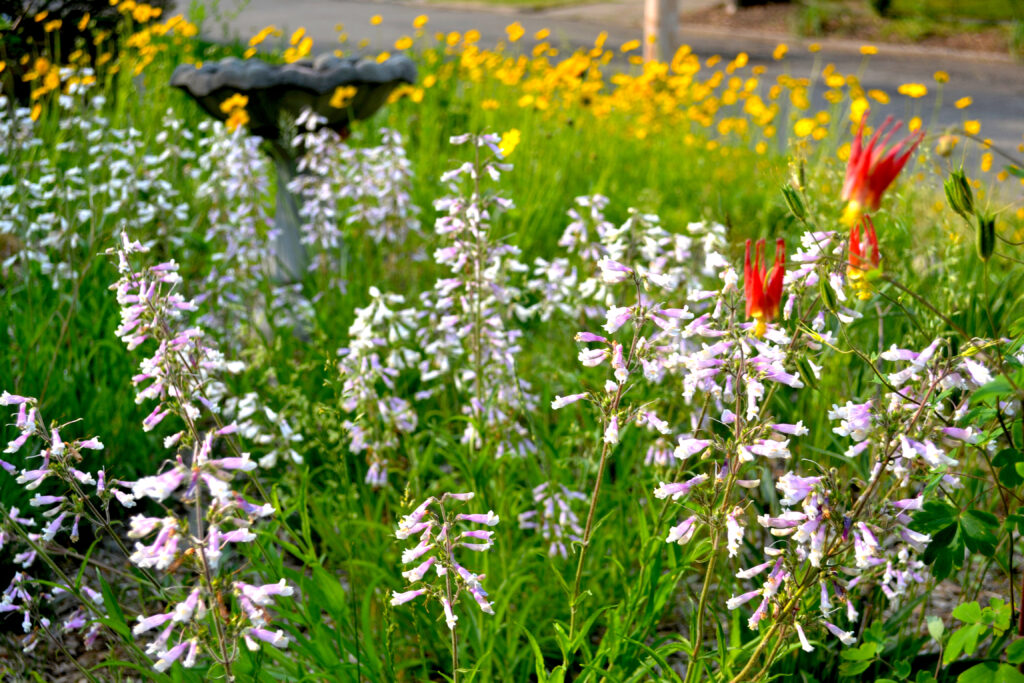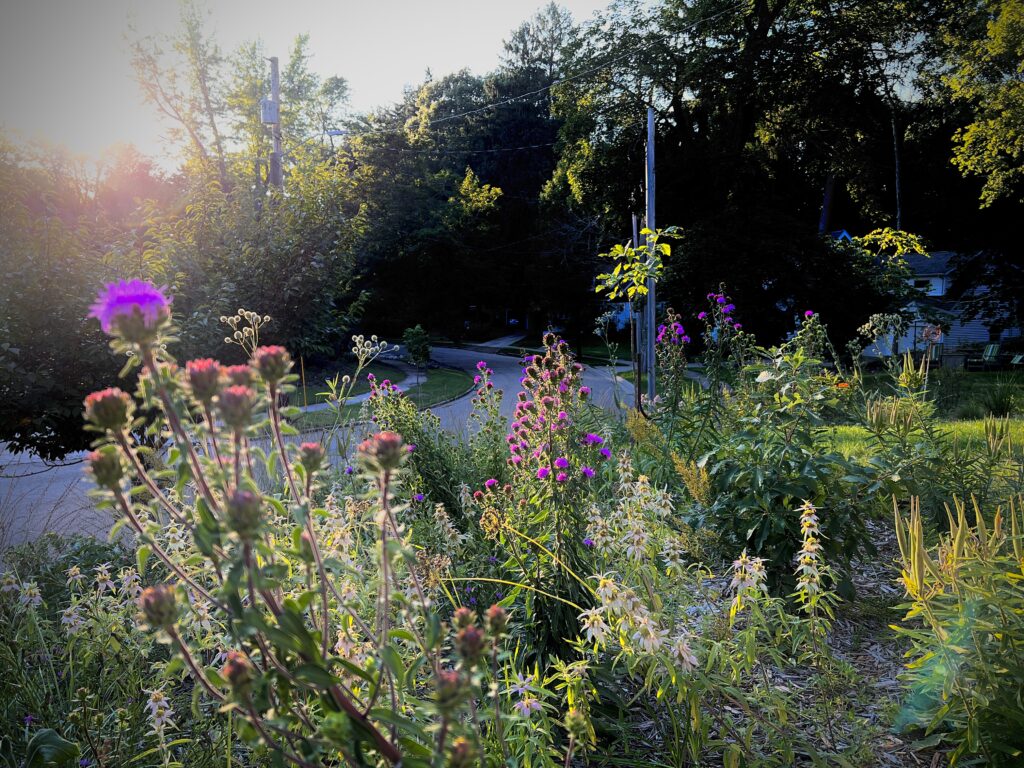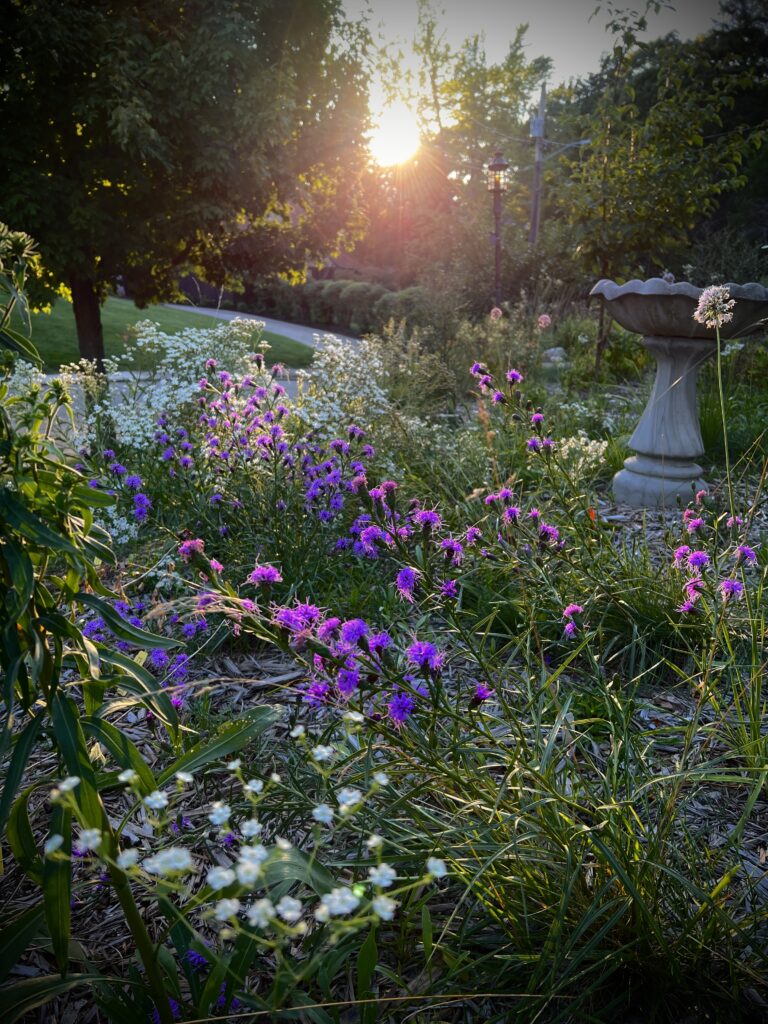by Mike Weis, KAWO member and owner of Dropseed! Native Gardens

“It’s got a good beat and you can dance to it.” That was a common response from dancers when asked on the 20th century television program American Bandstand for their review of a newly released pop hit. It’s an overly simplistic music criticism cliche by this point but there’s truth in it. All living beings are drawn to rhythm because rhythm is everything around us. It’s us! From the ancient Buddhist text of the Heart Sutra to the most updated research into Quantum Physics, human inquiry reveals that everything is formless rhythmic energy, nothing is static, and the subatomic core is an invisible pulse! Everything is vibrating, changing, impermanent, a process. Same is true for ecology. Next time you visit a remnant natural community, pay attention to the patterns, the repeating elements, the dynamic changes, the rhythm of life. As local ecology guru Steve Keto instructed the middle school class that I was assisting with him last year, “look closely around these woods and you will see natural organization, not chaos.”
How can we harness the seemingly simple rhythmic compositions of a beautifully natural flowing prairie, savanna, or woodland and adapt it to our garden creations? Not an easy feat! Ancient ecosystems have had the benefit of thousands of years of evolutionary development to achieve that gorgeous sweep of color balance and texture. Gardens, whether they’re randomly broadcast seeding projects or carefully designed plantings, are human creations limited to the experience, skill, and knowledge of their creators. The practice of native plant gardening and ecological landscaping is a brief synthesis, in both time and space, of the real thing. It’s important to draw ideas and inspiration from natural communities and to use them as an ecological compass, but unless you’re doing a large-scale restoration project, it’s still gardening and art—a distillation of the masterwork of Mother Nature. What we are trying to accomplish is essentially an exaggeration of a native ecosystem.

You may have heard murmurings of the recently popular trend in modern garden design called “matrix planting.” This technique has been around for a long time but has gained popularity through the works of “the New Naturalists,” most notably Dutch garden designer Piet Oudulf. The matrix method is meant to achieve that carefully planned “natural look.” Designers Thomas Rainter and Claudia West wrote about this extensively in their wonderful book “Planting in a Post-Wild World” as did Larry Weaner in “Garden Revolution,” Kelly Norris in “New Naturalism,” and Roy Diblik in “The Know Maintenance Perennial Garden.”
Honestly, I think what they are trying to achieve is exactly what us Wild Ones have been doing from the first breaths of the natural landscaping movement. Essentially, they’re drawing ideas from nature for aesthetics and function, but they’re putting more emphasis on design to accomplish a low-maintenance, ecologically functional garden. As native plant gardeners, ecological function has been our main priority for decades but I think we can learn a lot about design aesthetics from the “New Naturalism” movement, if nothing else but to expand beauty in the eyes of a wider range of beholders!
According to Rainer and West, “Great planting design is the result of three harmonious interactions: the relationships of 1) plants to place, 2) plants to people, and 3) plants to other plants.” (I would modify this to add #4: “plants to fauna.”) It’s absolutely crucial to have experiential knowledge of your plant palette so that you can successfully satisfy all four of these relationships.
Oudulf believes that the basis of his success is his deep knowledge of plants. “Plants will disappoint you if you don’t know them. It takes years to understand plants and how to use them. They are like human beings—you might meet one and at first think, ‘Oh, they’re pretty,’ but then you get to know them, and discover that maybe they are not so pretty to work with, or live with, or they might not work well with others. To know plants takes a lifetime, and you must practice using them and make lots of mistakes, because failure is part of the whole experience.”

The matrix design system is site specific but a simple overview of it is that essentially it’s organized into Function and Design layers. Within these layers are the Structural plants (10-15% of your plant list), Seasonal plants (30-50%), Base layer plants (approximately 50%) and Temporal filler plants (5-10%). The last two groupings are the functional layers and the first two are the design layers. Balance of these layers is key to achieve a robust, lush garden that has a pleasant rhythm to it.
A diverse base layer provides the calming tone to the composition, the seasonal drift is the variational harmonic vignettes, and the architectural structural plants are the touchstone landmarks of the gardens. The biggest mistake most gardeners make is planting sparsely, especially in the base layer. If you do this your garden is going to look like an unattractive spotty beard! The other extreme that I’ve been noticing lately, mostly from professional landscapers, is going overboard with the base layer and using a lack of diversity of species for ground cover. Some designers propose an extreme 80-20 ratio of graminoids to forbs mix. If you do this your beard will be thick but definitely unkempt-looking!!
The balancing of this layer-system approach is the nuanced artistic touch that honestly takes some trial and error, but what’s important is to just dive in and experiment with it because it will get you to the self-regulating communal system quicker than if you default to the conventional garden techniques of the “plant islands in a sea of mulch” aesthetic that the matrix method was revolting against. There’s definitely no groove happening there!
